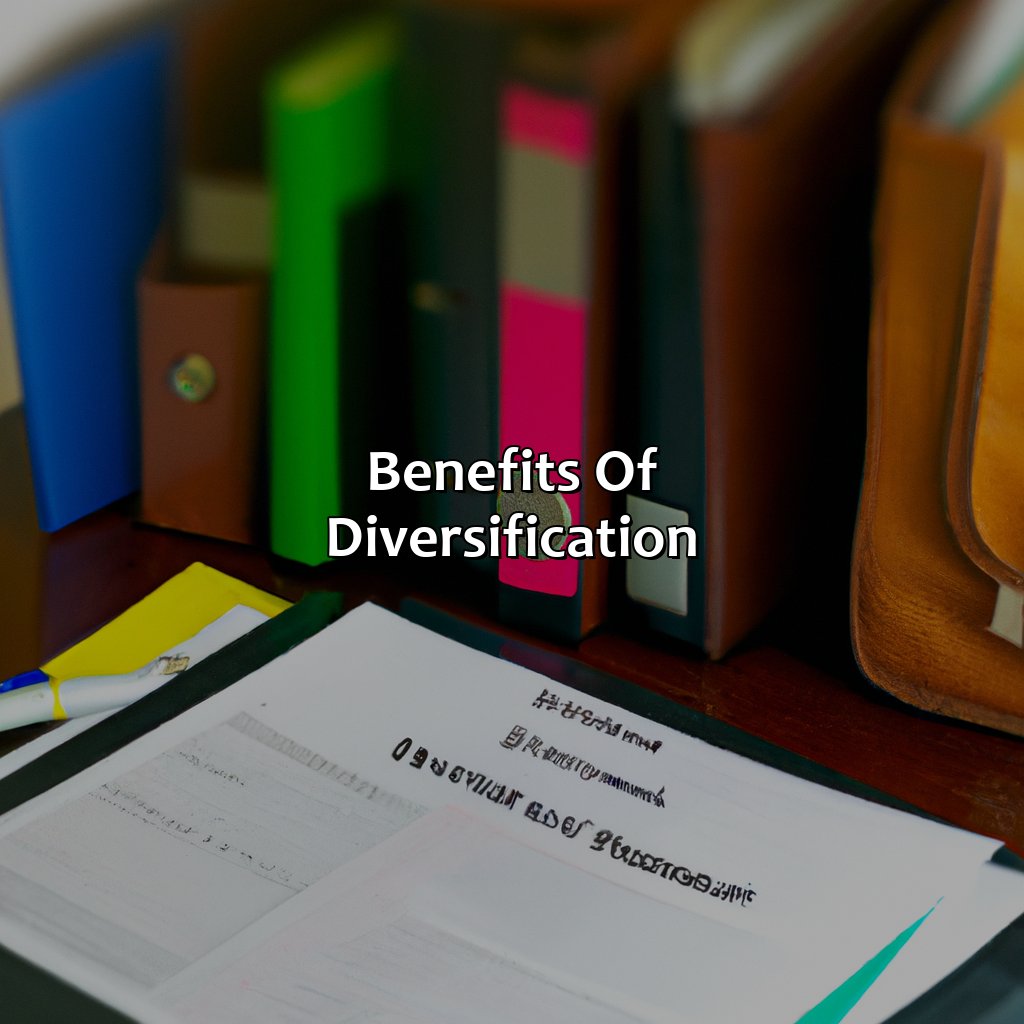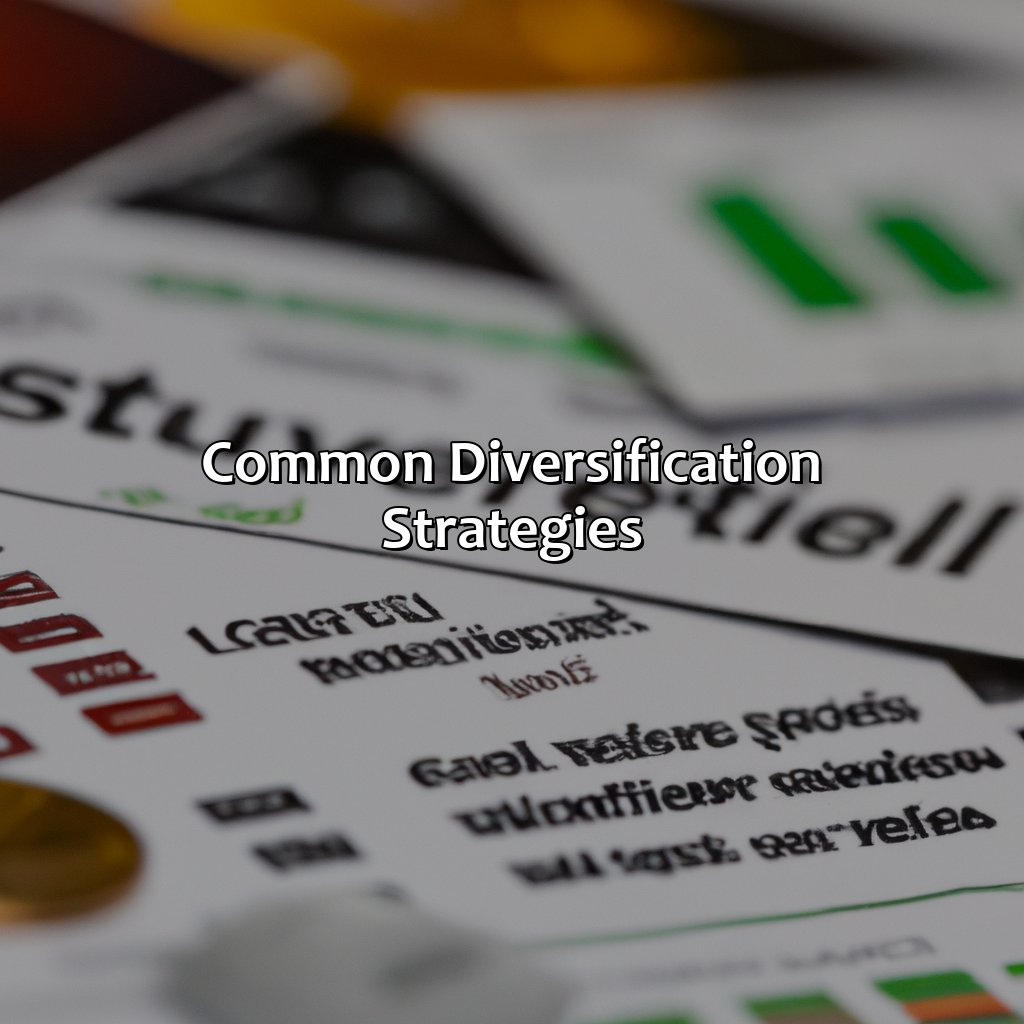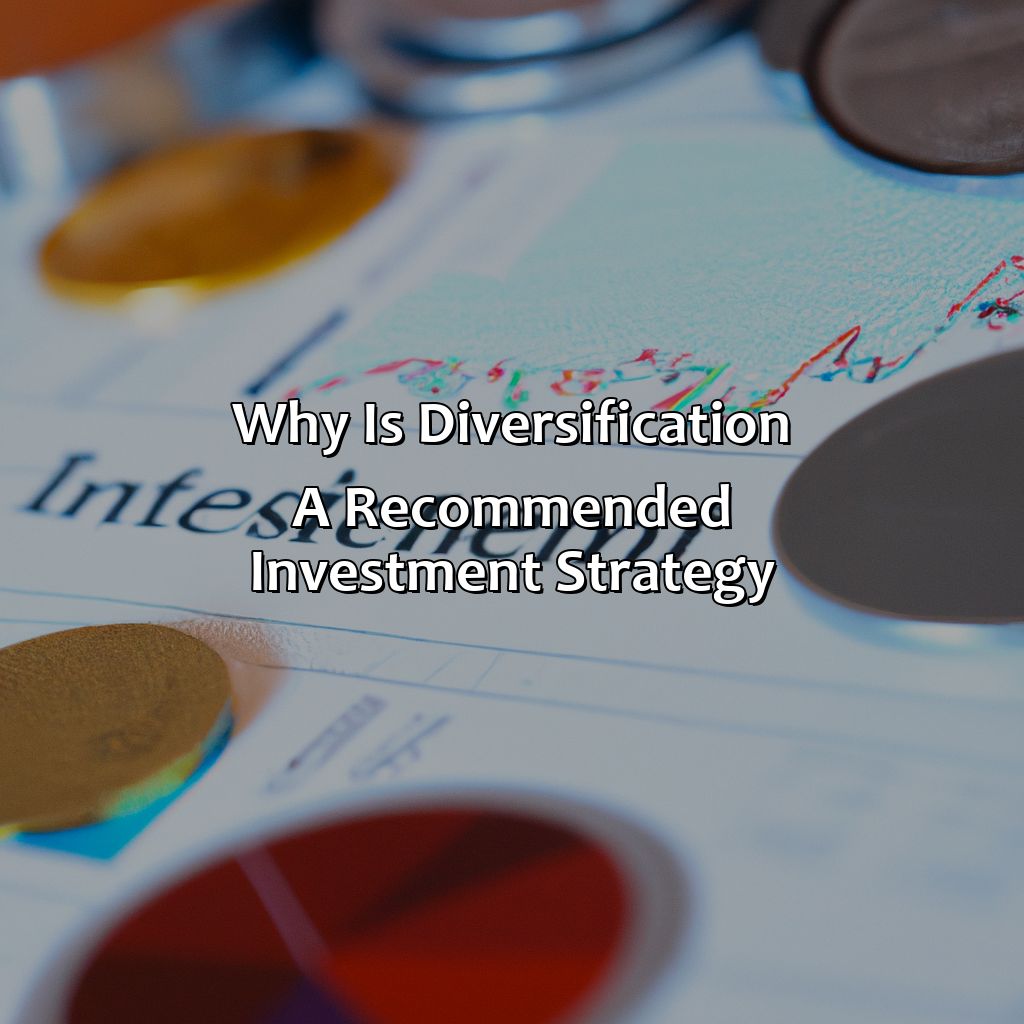Why Is Diversification A Recommended Investment Strategy?
Key Takeaway:
- Diversification is a recommended investment strategy because it helps spread risk across various investments, reducing the impact of a single investment on the overall portfolio. By investing in different sectors and asset classes, investors can protect themselves against market volatility.
- Diversification also has the potential for higher returns, as investing in multiple opportunities maximizes the chances for gains. By choosing investments with different performance correlations, investors can reduce the risk of market losses during downturns.
- To implement diversification, investors should consider asset allocation, choosing investments across different sectors, and considering their timeframe. Common strategies include portfolio rebalancing, dollar-cost averaging, and tax-loss harvesting.
Are you looking for the best way to maximize your investments? Diversification is a recommended investment strategy that may help you achieve your financial goals. You’ll learn the importance of diversifying investments and how it can benefit you in this article.
The Importance of Diversification
Diversification is a crucial investment strategy for mitigating risks and averting losses. By investing in a range of assets, you can spread your risks and loss probabilities. Such an approach increases your chances of earning higher returns while avoiding market volatility. Not only does diversification minimize the total risk of your portfolio, but it also helps you maximize your returns. It is necessary to create a well-structured portfolio that combines different asset classes such as bonds, shares, and commodities. A diverse portfolio also gives an opportunity to take advantage of the strengths of various sectors and industries leading to a better overall performance.
While diversification is crucial, it requires a deep understanding of the assets. Conducting thorough research and analysis can help you make informed decisions. Investors must also maintain discipline and avoid making hasty decisions based on short-term market trends. A balanced approach to diversification ensures that your investments provide long-term returns.
History is filled with examples of unfortunate market crashes, such as the 2008 recession caused in large part by subprime mortgages. During that time, a well-diversified portfolio that spread over international markets and various industries would have likely mitigated the damage done. Diversification saves investors from the shock of such sudden market crashes, global pandemics, or any other unfortunate macroeconomic event. Hence it is essential to appreciate the importance of diversification when planning your investment strategy.

Image credits: retiregenz.com by James Washington
Benefits of Diversification
Maximise the advantages of diversifying investments with this section! It has subsections covering:
- Spreading risk
- Potential for higher returns
- Protection against market fluctuation
All helping you reach your financial ambitions!

Image credits: retiregenz.com by Adam Duncun
Spread of Risk
Diversification reduces investment risk by spreading capital across various asset categories. This strategy helps minimize losses in case of market downturns, changes in interest rates or other external factors that may affect one part of the portfolio.
Investors can diversify their portfolios by investing in stocks, bonds, mutual funds, real-estate or commodities. Allocating recourses equally to different asset classes with varying risks – low-risk securities provide stability during volatility while higher-risk securities offer potentially higher returns over a longer period.
It is important to note that diversification doesn’t guarantee profits and markets are not always predictable, but distributing your assets wisely can help reduce risk exposure.
According to Forbes.com, “Studies have repeatedly shown that a diversified mix of assets tends to produce stronger long-term returns than concentrated investments.”
Putting all of your eggs in one investment basket is like wearing a speedo in a snowstorm – you’ll regret it later. Diversification is key for potential for higher returns.
Potential for Higher Returns
Investors are recommended to diversify their portfolios for maximizing returns and minimizing risks. By investing in various assets classes, sectors, and geographical regions, investors can increase their potential for higher returns in the long term.
Diversification helps in reducing the correlation between different investments. This means that a drop in one asset’s value does not necessarily result in a drop in another asset’s price. In other words, diversified investments mitigate risks by acting as a natural hedge against market volatility.
Therefore, although diversification cannot guarantee profit or protect investors from losses, it enables them to spread the risk across multiple assets and minimize the effect of fluctuations on portfolio performance.
Pro Tip: Investors should aim for optimal diversification by selecting a range of investments that complement each other while ensuring they are mindful of transaction costs and fees.
A diversified portfolio is the financial equivalent of wearing a helmet during a roller coaster ride.
Protection Against Market Volatility
Mitigation of Volatility Risks through Diversification
Diversification is a valuable investment strategy that shields investors from the adverse effects of market volatility. By dividing your portfolio into various asset classes with differing levels of risks, you can minimize the impact of fluctuations in any one section. In volatile market conditions, investments such as shares may experience a decline in value, but a diverse portfolio allocation reduces risk exposure.
A diversified portfolio decreases losses and amplifies gains by holding assets with negative correlation, which moves opposite to each other. A diversified portfolio’s fluctuations will be smoother than investing solely in one asset class, such as stocks or bonds. To maintain diversification, weightings among asset classes should be rebalanced periodically as their performance changes over time.
To ensure optimum protection against market volatility, it is essential to invest in different sectors and industries. The magnitude and frequency of fluctuations depend on various factors across sectors, regionally, geopolitics, social events and more. Therefore, diversifying broadly across asset types provides an important layer of protection for investment portfolios.
Pro Tip: As part of your long-term financial plan consider using a combination of active and passive strategies to achieve diversification that suits your investment goals. Diversification is like having a backup plan for your backup plan, except it actually works.
How to Implement Diversification
To diversify with asset allocation, try these steps. Diversification is a great strategy for reducing risk and increasing returns. Here is a quick guide on how to do it:
- Asset Allocation
- Choosing Investments Across Different Sectors
- Considering Timeframe

Image credits: retiregenz.com by Adam Duncun
Asset Allocation
Asset allocation is the process of distributing your investment portfolio across different asset classes such as stocks, bonds, and cash equivalents. This strategy aims to balance risk and rewards within your investment portfolio while considering your financial goals, time horizons, and risk tolerance.
By diversifying your assets, you can decrease the overall risk within your portfolio. This enables you to receive a more consistent return on your investments over a longer period. For instance, if stocks decrease in value, bonds may increase in value and offset some of those losses. The appropriate allocation will vary based on individual investment objectives and risk tolerance.
It’s important to note that asset allocation should be reviewed regularly to ensure it aligns with your investment goals and financial situation. Furthermore, one must consider factors like age, inflation rates, taxes while selecting an asset allocation strategy.
To create an effective asset allocation plan always have a long-term perspective when formulating the distribution pattern. Ensure diversification among different industries or sectors by investing in mutual funds or index funds instead of picking individual stocks. Also prioritize investing in low-cost fees which reduces expenses over time but provides better returns in the long-term based on compound interest analysis.
Why limit yourself to one sinking ship when you could spread your investments across multiple industries?
Choosing Investments Across Different Sectors
Choosing Investments Across Varied Industries
Investing in multiple industries is crucial for a diversified portfolio. Some points to consider while choosing investments across varied industries are investing in growing and established sectors, balancing the investments to avoid overexposure, considering region-specific industries to limit risks, and staying updated with industry trends and news which affect investments.
- Growing and Established Sectors: Investing in both new and established sectors can reduce the risk and increase returns. Emerging industries have a higher growth potential, but established ones tend to be more stable.
- Balancing Investments: It’s essential to balance investments across diverse industries to avoid overconcentration or exposure of one market sector. Therefore, investors must diversify their portfolio.
- Region-Specific Limitations: Industry choices should also factor regional limitations. For example, certain regions may lack sectoral maturity or regulatory framework necessary for stable investment opportunities.
- Keep Updated on Industry Trends: The ups-and-downs of specific industry happen all the time due to changing environments such as economic development or technological advancements. Hence it’s good practice for investors regularly follow industry news and trends like regulatory changes that might impact returns adversely.
The above steps help limit potential losses while increasing the likelihood of long-term success.
True Story:
Following an unexpected oil recession back in 2014-15 made university professor JJ took heed of these structures and quickly diversified his portfolio after losing 1/3rd of his savings resulting from his exposed oil stock holdings at that time. Instead of funneling everything into hospitality stocks like traditional advice went- he invested in supplementary areas such tech which firmed him against recessions leaving him less vulnerable in times of crisis.
Why worry about the future when you can just diversify your portfolio and let time do all the heavy lifting?
Considering Timeframe
The time frame for diversification is an essential factor to consider when making an investment decision. It determines the level of risk tolerance, the expected returns on investments, and the investor’s financial goals.
Investors with a long-term investment horizon may choose more aggressive asset allocation strategies, while those with short-term investment needs opt for less aggressive ones. With diversification, investors can mitigate short-term market volatility and limit their exposure to riskier assets.
It is also worth noting that investors should review their portfolios periodically to ensure that their investment goals are still aligning with their overall financial objectives. A portfolio rebalancing strategy can be implemented in the event of any changes in economic conditions or personal circumstances.
In the past, many investors had relied solely on individual stock picks or concentrated bets, which led to significant losses during market downturns. However, by implementing a diversified portfolio across different sectors or asset classes reduces overall risk and increases potential returns over the long run.
Putting all your eggs in one basket might lead to a great omelette, but diversification is the key to a stable investment portfolio.
Common Diversification Strategies
Maximize your investments by exploring each sub-section of Common Diversification Strategies!
- Portfolio Rebalancing helps maintain a diversified portfolio.
- Dollar-Cost Averaging invests a fixed amount over regular intervals, reducing market volatility.
- Lastly, Tax-Loss Harvesting sells investments to generate capital losses and offset taxes.

Image credits: retiregenz.com by Adam Woodhock
Portfolio Rebalancing
Maintaining an optimal investment portfolio requires regular adjustments to its balance, known as ‘Asset Allocation Rebalancing.’ This process involves tweaking the proportion of each asset type within a portfolio based on market performance to achieve a more desirable risk-return trade-off.
A rebalanced portfolio is reshaped to reflect investors’ investment objectives and risk appetite – maximizing returns while minimizing volatility. In Asset Allocation Rebalancing, portfolios’ underperforming assets get trimmed, and outperforming assets are sized down to adjust the overall allocation levels.
The significance of Asset Allocation Rebalancing is highlighted in the emergence of new bonds, stocks, and ESAs that highlight various returns and risks. Professional advice can also assist in making informed decisions when it comes to managing these investments for optimal diversification.
Not optimizing your asset allocation leaves you vulnerable to sole dependence on a particular stock or security without proper notification. So it’s always better to prevent missed opportunities by rebalancing your portfolio actively.
When it comes to dollar-cost averaging, it’s like they say: ‘slow and steady wins the investment race’, or at least finishes with a decent return.
Dollar-Cost Averaging
Investment experts suggest that a smart way to invest is to use a technique known as recurring investment strategy. Recurring investment involves investing the same amount of money in an asset over time, regardless of its value, usually on a regular basis. It is commonly known as Dollar-Cost Averaging (DCA).
Dollar-Cost Averaging allows investors by investing a pre-determined sum at regular intervals, which helps you purchase more shares when their price is lower. This means your overall cost per share decreases as long as the stock’s worth rises over the long run. Investing a fixed amount every month rather than trying to time the market suggests that by investing regularly; you are reducing your exposure to market volatility.
It is widely recommended because it reduces the risk and provides stability to the portfolio through periodic investments made at predetermined intervals. This technique helps avoid buying high and selling low & promotes consistency in investing practices.
Research studies have shown that by practicing DCA in long term investments has delivered promising outcomes for many people globally and could be one of the most straightforward strategies for investing profits regularly without worrying about short-term market fluctuations.
Some investors have successfully doubled their investment over an extended period using this method. It safeguards against bad timing since it requires regular contributions regardless of whether conditions are favorable or unfavorable, allowing investors to remain disciplined with their savings programs without risking anything.
Tax-Loss Harvesting: The one time it’s okay to lose and still come out a winner in the end.
Tax-Loss Harvesting
By selling stocks that have lost value and buying those with similar characteristics, investors can offset capital gains with capital losses. By doing this, they can reduce their taxable income while maintaining their investment positions. Tax-loss harvesting is more effective when done at the end of the year to maximize deductions.
One crucial aspect often overlooked about this strategy is that it requires discipline, technical expertise, and constant monitoring of market changes to be effective. Tax loss harvesting targets short term losses while avoiding long-term losses in securities that yield great returns over time.
Investors who apply tax-loss harvesting in their portfolios have found significant improvements in their returns over time. For instance, John invested $1000 in Index Fund A and another $1000 in Index Fund B at the beginning of 2020. At year-end, Fund A had gained 15%, and B lost 10%. Instead of booking profits on Fund A (which would attract taxation), John could book a loss on Fund B through Tax-Loss Harvesting, thus reducing his tax liability significantly.
Five Facts About Why Diversification Is a Recommended Investment Strategy:
- ✅ Diversification helps reduce risk by spreading investments across different asset classes and sectors. (Source: Investopedia)
- ✅ Diversification can help improve returns by balancing low-performing investments with high-performing ones. (Source: SmartAsset)
- ✅ Professional investors often recommend diversification as a key strategy for long-term investment success. (Source: The Balance)
- ✅ Diversification can provide peace of mind for investors, knowing their portfolios are not overly reliant on any one investment. (Source: Forbes)
- ✅ Despite the benefits of diversification, it’s important to regularly review and rebalance portfolios to ensure they align with investment goals and risk tolerance. (Source: U.S. News & World Report)
FAQs about Why Is Diversification A Recommended Investment Strategy?
Why is diversification a recommended investment strategy?
Diversification is a recommended investment strategy because it helps to spread out your investments across a variety of sectors and assets, reducing the risk of losing all your money if one particular investment turns out to be a failure.
How does diversification reduce investment risk?
Diversification reduces investment risk by spreading your investments across different types of assets, such as stocks, bonds, real estate, and commodities. By doing so, the potential losses from any single asset are minimized, and the overall risk of your portfolio is reduced.
Can diversification increase investment returns?
While diversification does not guarantee higher investment returns, it can potentially increase returns by allowing you to capture gains from different sectors. For example, if one sector (e.g. technology) is underperforming, gains from another sector (e.g. healthcare) may offset the losses.
How many assets should I diversify my portfolio across?
There is no set number of assets that you should have in your portfolio to achieve diversification, but it is generally recommended to invest in at least 15-20 different assets. This will ensure that your portfolio is not overly concentrated in any one area.
Is diversification suitable for every investor?
Diversification is generally suitable for every investor regardless of their risk tolerance or investment goals. However, it is important to consult with a financial advisor to determine the best diversification strategy for your individual needs and circumstances.
What are some potential drawbacks of diversification?
One potential drawback of diversification is that it may limit the potential gains from a single asset that performs exceptionally well. Additionally, if the entire market is experiencing a downturn, diversification may not necessarily protect against losses in every asset class.


